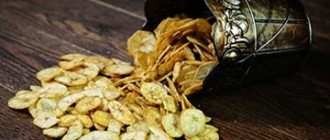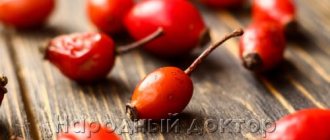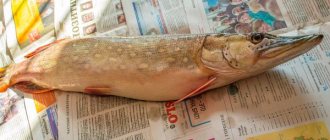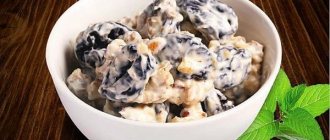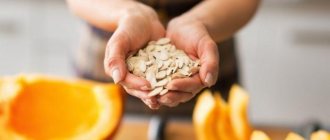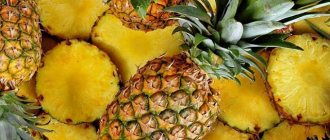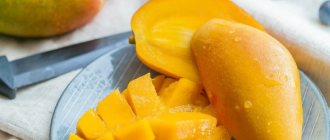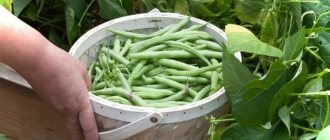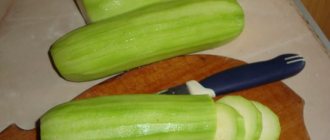Drying methods
There are not so many ways to dry fruits: in the sun, in the shade, using heat and chemical treatment. The most useful fruits are those dried in the shade; they become soft and retain all their beneficial properties, but at the same time acquire a darker shade than fresh ones. These products can be eaten without heat treatment, during which some of the vitamins are destroyed. Sun-dried fruits also retain vitamins and microelements and darken, but at the same time they still harden. They make wonderful compotes. Unfortunately, dried fruits are made mainly in private farms using these two methods.
In industry, fruits are first dried using electric dehydrator dryers, and then further treated with sulfur dioxide (also known as sulfur dioxide, food additive E220). This colorless gas with a pungent odor prevents mold and mildew and helps maintain the natural color of the fruit. It is believed that our body completely utilizes it when we eat dried fruits. There is also an opinion that when dissolved in water, it irritates the mucous membranes of the digestive system. Whether this is true or not, it is difficult to say, in any case, before eating attractive-looking delicacies, you should rinse them well and leave them in cold water for a while. It is better not to use hot water; it destroys the beneficial ingredients of dried fruits.
Read: Useful information about granulated sugar: calorie content, benefits and harm
Silk Road
Dried fruits come to us from all over the world. Raisins come from Afghanistan and Iran, prunes from Moldova, Argentina and Chile, dried apricots from Turkey and Tajikistan. And this is not a complete list of countries into which the USA and China are constantly breaking in. With a huge number of suppliers, it is simply impossible to track the quality of all dried fruits. Of course, the ideal drying option is natural drying in the sun or in the shade, but not all manufacturers can afford such a luxury. Many fruits and berries spoil already at this stage, so chemicals and gas ovens are often used to save time and money.
Techniques of unscrupulous manufacturers
Sulfur dioxide is not the only chemical found in colorful dried fruits. To give them a marketable appearance, they are pumped with preservatives and dyes, treated with glycerin or other fat, smoked with liquid smoke, and dipped in boiling water with caustic soda. Moreover, in some underground workshops they are dried in ovens that are not at all intended for this purpose, for example, gasoline or gas ones, as a result of which they acquire an unpleasant odor, and carcinogens, heavy metal salts and other harmful substances settle on their surface. Dried fruits are often sold without complying with sanitary standards; as a result, they absorb exhaust gases and become covered with dust.
Look for alternatives
Less common types of dried fruit may be a healthier snack option. For example, soyagi raisins. A sure sign that the raisins are of high quality is the presence of stems. For the soyaga, it is just in place. This variety of raisins is obtained from naturally dried grapes. Producers take the juiciest, ripest bunches, dry them for 2-3 months and only after that separate the berries without treating them with oil or chemicals. Another distinctive feature of soyaga is its high level of potassium, which regulates the water-salt balance in the body.
Royal dates are very easy to recognize: they are exactly twice the size and sweeter than regular dates. In Israel and Jordan, where they come from, ripe fruits are picked from the trees while they are soft, while there is a lot of moisture in them, and sent to the freezer at a temperature of -18 ° C to extend their shelf life to 8-9 months. No sugar is added to them. Our advice: choose dates from Mehadrin and King Solomon producers.
Dried persimmons can also be a great snack. Just don’t buy it at the market - there you will find overdried hard fruits. The best option is dried persimmons from the Atara farmer cooperative in Abkhazia. In 2014, its creators received an ICEA certificate (the main certification organization in Italy), thereby confirming their status as a manufacturer of 100% organic products.
Pay attention to the mulberries.
It is brought to Russia, for example, from Armenia. Naturally sun-dried mulberries can be found at the LavkaLavka farmer’s cooperative. It is eaten pure or ground in a blender and added to porridge or casserole instead of sugar. Text: Yulia Kozoliy
How to choose dried fruits
When choosing dried fruits and berries, you should understand that not a single product can become brighter after drying. Dried apricots and dried apricots darken after drying; they acquire a bright color to a certain extent as a result of the use of sulfur dioxide, but mostly through the use of dyes, which is much worse. After sulfur dioxide, dried apricots may turn light yellow, but not orange, and without the chemical, the color will most likely be closer to gray-brown. In any case, it is better not to give light dried apricots to children.
There are also some peculiarities in the processing of prunes. It is dipped in a boiling solution of caustic soda, which is a caustic alkali, and then treated with glycerin or other fat (sometimes genetically modified soybean oil) to add shine. Properly cooked prunes will never be shiny and glossy black; their color is black, but matte. You should not buy a product with a brown tint; soda gives it this color, and besides, such prunes are usually bitter.
Apples are always treated with sulfur dioxide to prevent darkening, which does not exclude, of course, improper drying, the use of dyes and preservatives. This product is quite available fresh all year round, and it is better to buy it. But figs are a delicate fruit; you can’t take them far when fresh. Properly dried figs should have a light brown matte color and a slightly flattened shape. A small white coating is allowed; this is not chemicals, but glucose that has appeared on the surface of the fig as a result of drying.
Read: Fighting iodine deficiency: which foods contain a lot of iodine
Light grapes darken during the drying process, dark grapes become black, so light raisins obtained using the correct technology do not exist; they are the result of chemical processing, and possibly treatment with fats. The dates that are brought to our country are, for the most part, not dried fruits at all; they are preserved with corn or other syrup.
The only way to be sure that dried fruit was produced using the correct technology without chemical treatment is to dry it yourself.
Read along with this article:
- Dried fruits for diabetes, their benefits and harms, what you can...
- Is dried fruit compote really healthy?
- Dried apricots for constipation: a tasty and healthy laxative
- What are the benefits of dates, how to choose and store them, recipes
- Dried plum, its beneficial properties. Dietary recipes with prunes
- Prunes: calories and eating habits
- Dried apricots for constipation: beneficial properties, prevention of constipation with…
- Treatment of the disease: diet and consumption of prunes for pancreatitis
- How to eat muesli correctly, recommendations for consumption
How are dried fruits processed?
The main goals pursued by dried fruit suppliers are to speed up the drying process and protect products from insects. Therefore, their faithful assistant is sulfur dioxide, or sulfur dioxide (look for E220 or Sulfur Dioxide on the packaging). For example, dried apricots and raisins are processed with it. Even though sulfur dioxide deposits only a thin layer on dried fruits, it still affects our internal organs. When interacting with water in the stomach, it is transformed into sulfurous acid, which negatively affects the mucous membranes. In addition, sulfur dioxide destroys thiamine (a vitamin that plays an important role in metabolic processes) and is contraindicated for asthmatics - it causes severe allergies.
Ever felt the gasoline smell from raisins, dried apricots, prunes or dates? This means that dried fruits were dried in gasoline or tunnel ovens. Such heat treatment deprives foods of vitamin C, but gives a generous portion of carcinogens.
Cheap oils (for example, palm oil) and glycerin add shine to dried fruits. They are applied to prunes and dried bananas. Oil makes prunes softer.
Sugar is often added to raisins and cranberries. So, a handful of raisins may contain 25 grams of sugar, and this is the daily requirement for a person who is already not very worried about his health.
The effect of sulfur dioxide in dried fruits on the body
Preservative E220 is considered dangerous. But its influence on a person depends on individual susceptibility. When sulfur dioxide enters the body, it is oxidized by special enzymes to sulfate and excreted in the urine. But not all people have these enzymes in the required quantities. The degree of sensitivity to the supplement also depends on the acidity of gastric juice. When it increases or decreases, the tolerability of the preservative worsens.
A comparison of processed and unprocessed dried fruits raises questions about the dangers of E220 additive
Sensitive people may experience health problems when consuming products with sulfur dioxide. Harm from preservative E220 in dried fruits:
- headache;
- dry mouth;
- cough;
- sore throat;
- rhinitis, nasal congestion;
- digestive disorders manifested by diarrhea;
- vomit;
- nausea.
People with bronchial asthma may experience an attack of suffocation after ingesting sulfur dioxide, and some develop pulmonary edema or uncontrollable vomiting. But such complications are typical for cases when concentrated SO2 gets on the mucous membranes. When eating dried fruits, the likelihood of these problems is minimal. Such complications are possible only in case of hypersensitivity to the preservative.
We recommend reading: Food additive E133: dangerous or not, effects on the body
People with kidney failure should avoid dried fruits treated with E220. Sulfur dioxide is excreted through the kidneys, which bear the main burden. If this preservative is ingested in large quantities, the kidneys may not be able to process and eliminate it.
Some researchers believe that systematic consumption of foods containing SO2 increases the risk of developing cancer.
Two reasons why you need to wash dried fruits
The first reason is simple and probably understandable to many. No one knows what conditions dried fruits were in before they reached your table. Perhaps the dried half of a prune ended up on the floor somewhere, and an unscrupulous seller returned it to the general box? Or, for example, did someone take the fruits with their hands without gloves? It’s already clear that dried fruits need to be washed.
The second reason is known to those who understand at least a little about the production technology of this product. It is important to understand that store-bought dried fruits are not homemade ones that have been dried in the sun. To ensure a beautiful appearance and a long shelf life, the fruits are treated with preservatives (benzoate and potassium sorbate, as well as sulfur dioxide). These substances do not pose any particular harm to the human body, but before consuming the treat, it is still better to process it correctly.
So how to properly wash dried fruits? It is worth noting that each type requires a special approach. Let's figure out what it should be like.
We took a projector, black paint and made a chic wall in the kitchen
A dancing waiter in a restaurant surprises customers with his movements (video)
Archaeologists have found the remains of an ancient German court in Veliky Novgorod
